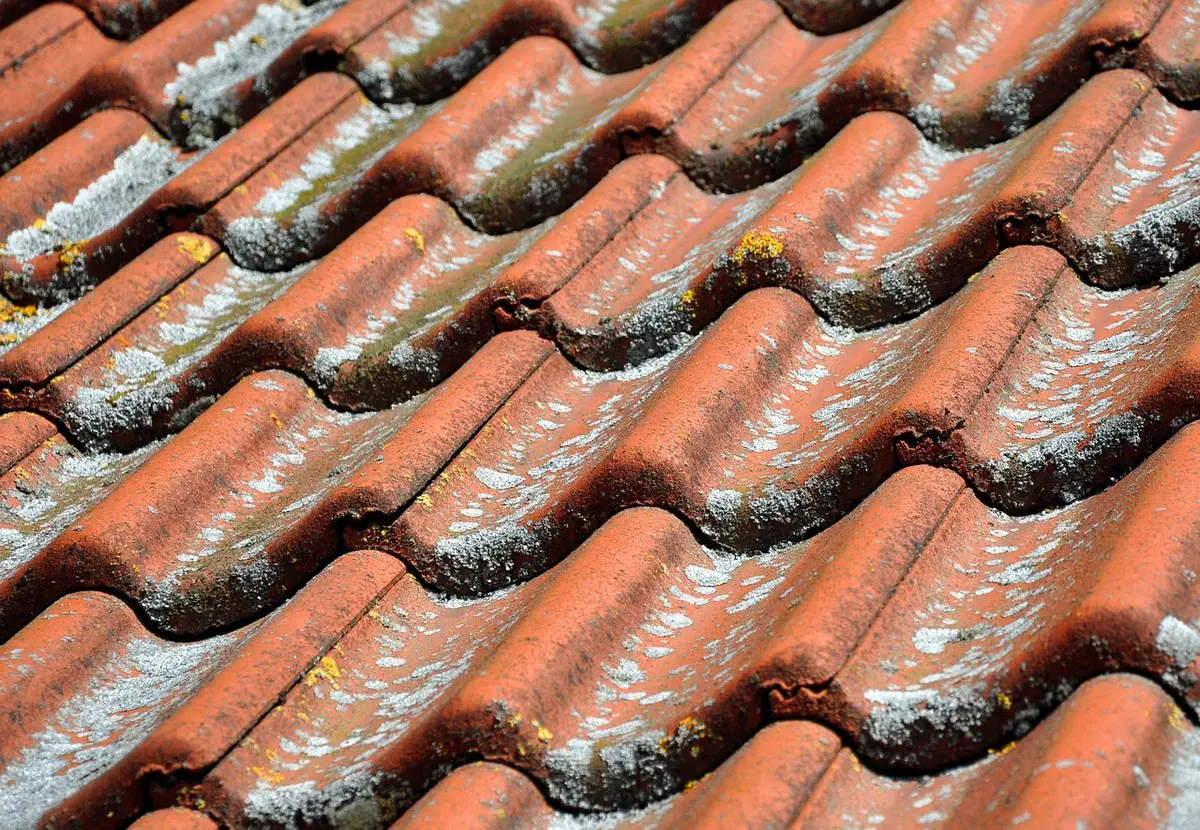The roof maintenance checklist every homeowner needs, Building roofers repair, Home roof maintenance advice
The Roof Maintenance Checklist Every Homeowner Needs
21 December 2023
A well-maintained roof is an essential component of a safe and secure home. Over time, roofs are subjected to the elements, causing wear and tear that can ultimately lead to costly repairs if not promptly addressed.
To ensure the longevity of your roof and avoid any unexpected expenses, it is crucial for homeowners to establish a regular roof maintenance routine.
Roof Maintenance Checklist
A comprehensive roof maintenance checklist serves as a valuable tool for homeowners, guiding them through the necessary steps to protect their investment. From cleaning gutters to inspecting the roof for damages, this checklist can help homeowners avoid potentially costly problems before they escalate. Moreover, such preventative measures can also improve the overall aesthetics of a home while contributing to increased safety.
In the following sections, we will break down the essential tasks every homeowner should include in their roof maintenance checklist. By adopting these practices and routinely assessing the condition of your roof, you can effectively safeguard your home, ensuring that it remains protected for years to come.
Essential Roof Inspection Points
Regular roof maintenance can prolong the lifespan of your roof and prevent costly repairs. In this section, we will discuss important inspection points that every homeowner should be aware of.
Check Shingles or Tiles
The first step in any roof inspection is to examine the shingles or tiles. Look for any that are:
- Cracked: Cracked shingles can allow water to seep through, leading to damage and leaks.
- Curled: Curled shingles can signify ventilation problems and may cause blow-offs in harsh weather.
- Missing: Missing shingles expose the roof underlayment to the elements, increasing the risk of damage. Replace any damaged shingles or tiles promptly to prevent further issues.
Inspect Flashing and Sealing
Flashing and sealing play a crucial role in protecting your roof from water damage. Key points to inspect include:
- Chimneys: Ensure that the flashing around chimneys is well-sealed and free of rust.
- Ventilation Pipes: Check for cracks or gaps in the sealing around roof vents.
- Skylights: Inspect the flashing and seals around skylight windows for secure attachment and signs of wear. Have a Pinellas Park metal roofing company repair or replace any damaged flashing or sealing to keep your roof watertight.
Evaluate Gutters and Downspouts
Properly functioning gutters and downspouts are essential to prevent water damage and clogged gutters can add unnecessary load to your roof. When inspecting, be sure to:
- Clean the gutters and remove any debris.
- Inspect for loose, sagging, or damaged sections.
- Check downspouts for blockages.
Search for Moss, Algae, or Fungus Growth
Moss, algae, and fungus can compromise the integrity of your roof if allowed to grow unchecked. During your inspection, look for:
- Moss: If you find moss growing on your shingles or tiles, remove it promptly, as it retains moisture and can cause rot.
- Algae: While algae growth is less damaging than moss, it can cause unpleasant staining on your roof. Clean the affected areas with a bleach solution.
- _Fungus*: Fungal growth can be indicative of trapped moisture and potential leaks, so investigate any signs of fungal growth for underlying issues.
Preventative Roof Maintenance Tips
Trim Overhanging Branches
Keeping trees and branches trimmed is an essential preventative maintenance measure that can decrease the risk of damage due to storms or heavy winds. Overhanging branches should be kept at least 10 feet away from the roof. This will help prevent leaves and other debris from accumulating, as well as reducing the likelihood of branches scratching or puncturing the roof material.
- Action: Inspect your trees and roofs regularly for overhanging branches.
- Frequency: Conduct trimming at least once a year, during late fall or winter when trees are dormant.
Clean Debris Regularly
Clearing your roof of debris like leaves, twigs, and dirt is another crucial maintenance step. Prolonged contact with moist debris can lead to the growth of mold, algae, and moss, which can weaken the roof structure and lead to leaks.
Ensure Proper Attic Ventilation
Proper attic ventilation is vital for maintaining the health of your roof. Inadequate ventilation can create a buildup of heat and moisture, which can cause:
- Ice dams in the winter
- Premature aging and warping of shingles
- Damage to insulation, leading to higher energy bills
Make sure that your attic has enough vents, and regularly check them for obstructions like bird nests or debris. A well-ventilated attic will not only extend the life of your roof but also reduce energy costs and enhance indoor comfort.
Professional Roof Maintenance
Hire Qualified Roofers
When it comes to maintaining your roof, it’s essential to hire qualified roofers. These professionals possess the skills and knowledge to accurately identify issues and complete necessary repairs. To ensure that you’re hiring a reputable roofing contractor, consider the following:
- Check for proper licensing and insurance
- Ask for references and read online reviews
- Compare quotes from various contractors
Schedule Regular Inspections
Scheduling regular inspections is crucial for keeping your roof in optimal condition. It is recommended that you have your roof inspected at least once or twice a year by a professional. Depending on your location and the weather conditions, you may need to schedule inspections more frequently. A typical roof inspection may include:
- Checking for signs of damage from weather or natural disasters
- Ensuring proper ventilation and insulation
- Identifying areas in need of repair or replacement
Address Issues Promptly
Once a roofing issue has been identified, it is essential to address it promptly to prevent further damage. Failing to address these issues in a timely manner may lead to severe consequences, including:
- Increased overall repair costs
- Reduced lifespan of the roof
- Potential for structural damage to your home
To avoid these negative outcomes, make sure to:
- Obtain a clear understanding of the issue from your roofer
- Discuss repair or replacement options and select the most appropriate solution
- Schedule the necessary repairs or replacements as soon as possible
Seasonal Maintenance Checklist
Pre-Winter Preparations
Before the harsh winter season arrives, homeowners should ensure their roof is in optimal condition. A well-maintained roof can handle the added weight of ice and snow. Consider the following recommendations during fall:
- Gutter Cleaning: Remove leaves and debris from gutters to facilitate proper water flow. Clean gutters prevent water from freezing and causing damage.
- Tree Trimming: Trim back any tree branches that may hang over the roof, as they can break under the weight of snow or ice and damage the roof.
- Shingle Inspection: Inspect your roof’s shingles for any signs of damage, such as cracks, curling, or missing sections. Replace or repair any damaged shingles prior to winter.
- Flashing Inspection: Check the flashing around chimneys, vents, and other roof penetrations for any signs of damage. Replace or repair damaged flashing to prevent water leaks.
- Insulation Review: Ensure your attic has adequate insulation and ventilation. Proper insulation prevents ice dams from forming, which can cause costly damage.
Post-Winter Assessment
Once winter has passed, it is time to evaluate any damage caused by the harsh weather. Assessing and addressing issues in a timely manner can help prevent further damage. Here are some key post-winter maintenance tasks:
- Gutter Inspection: Check your gutters for any damage, such as cracks or sagging. Repair or replace any damaged sections to ensure proper drainage.
- Snow and Ice Removal: Remove any remaining ice or snow from your roof, as it can increase the risk of leaks, water damage, and structural damage to your home.
- Shingle Inspection: Inspect your shingles again for any damage caused by winter elements. Repair or replace any damaged shingles to maintain your roof’s integrity.
- Roof Ventilation: Ensure your roof vents are clear of debris and functioning properly. Proper ventilation helps regulate indoor temperature and prevents moisture buildup.
- Moss and Algae Treatment: If you notice any moss or algae growth on your roof, treat it with a moss and algae remover. This will help prevent damage to your shingles and the underlying roof structure.
Comments on this The Roof Maintenance Checklist Every Homeowner Needs article are welcome.
Roofing Articles
Roofing Posts
Flat roof repair

image source : pixabay.com
Insulation Options for Your Roof
How to make your roofing company a success
Property Design
Contemporary Property Designs – recent architectural selection from e-architect below:
Comments / photos for the The Roof Maintenance Checklist Every Homeowner Needs page welcome



